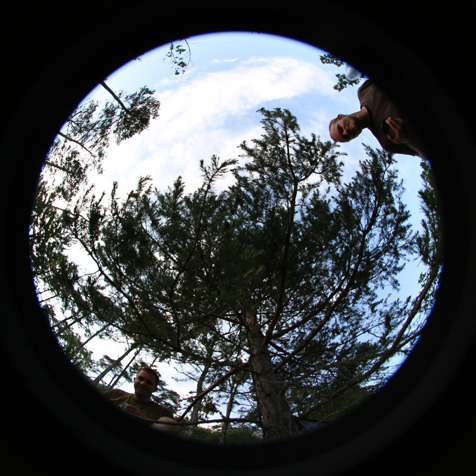trees was a research project conducted 2012 – 2015 by the Institute for Computer Music and Sound Technology (ICST) in collaboration with the Swiss Federal Institute for Forest, Snow and Landscape Research (WSL).
ICST members of staff involved: Marcus Maeder (PI), Philippe Kocher, Jonas Meyer
Project partner: Swiss Federal Institute for Forest, Snow and Landscape Research (WSL), Roman Zweifel
Technical solutions partners:
Decentlab GmbH, real-time monitoring solutions
omnisight GmbH, hybrid fuel cell and PV power solutions
The link between trees and various climatic processes is usually not immediately apparent. Trees and plants do not live merely on moisture from rain, sunlight (which drives gas exchange) and nutrients from the soil: they absorb carbon dioxide from the air and produce the oxygen that we breathe, maintaining our climate and biosphere. Hence the importance of conducting scientific research and measurements to explore the complex relationship between tree physiology and our climate and of producing an acoustic and artistic representation of the ecophysiological processes in trees. Rendering audible the way in which water transport and trunk diameter, for example, are influenced by sunlight, humidity and wind allows us to identify and understand better than ever before plants’ responses to climatic processes.
We started our investigations in plant bioacoustics and sonification of ecophysiological data in 2009; in our recent research project ‚trees: Rendering Ecophysiological Processes Audible‘, we are working on the acoustic recording, analysis and representation of ecophysiological and climatic processes and studying the acoustic and aesthetic requirements for making them perceptible. Measurements of acoustic emissions in plants must be analysed and understood in relation to other measurement data such as that relating to the microclimate, sap flow, changes in trunk radius and water potential in the plants’ organs – all measurement data that is not auditory per se. Therefore, we deal with the sonification of ecophysiological data as well as analysing the actual acoustic emissions. How can processes that are beyond our normal perception be made directly perceptible, creating new experiences and opening a new sight on processes in nature? To what extent is our sense of hearing of use?
‚trees‘ was funded by the Swiss National Science Foundation (SNSF) and the Zurich University of the Arts ZHdK.

